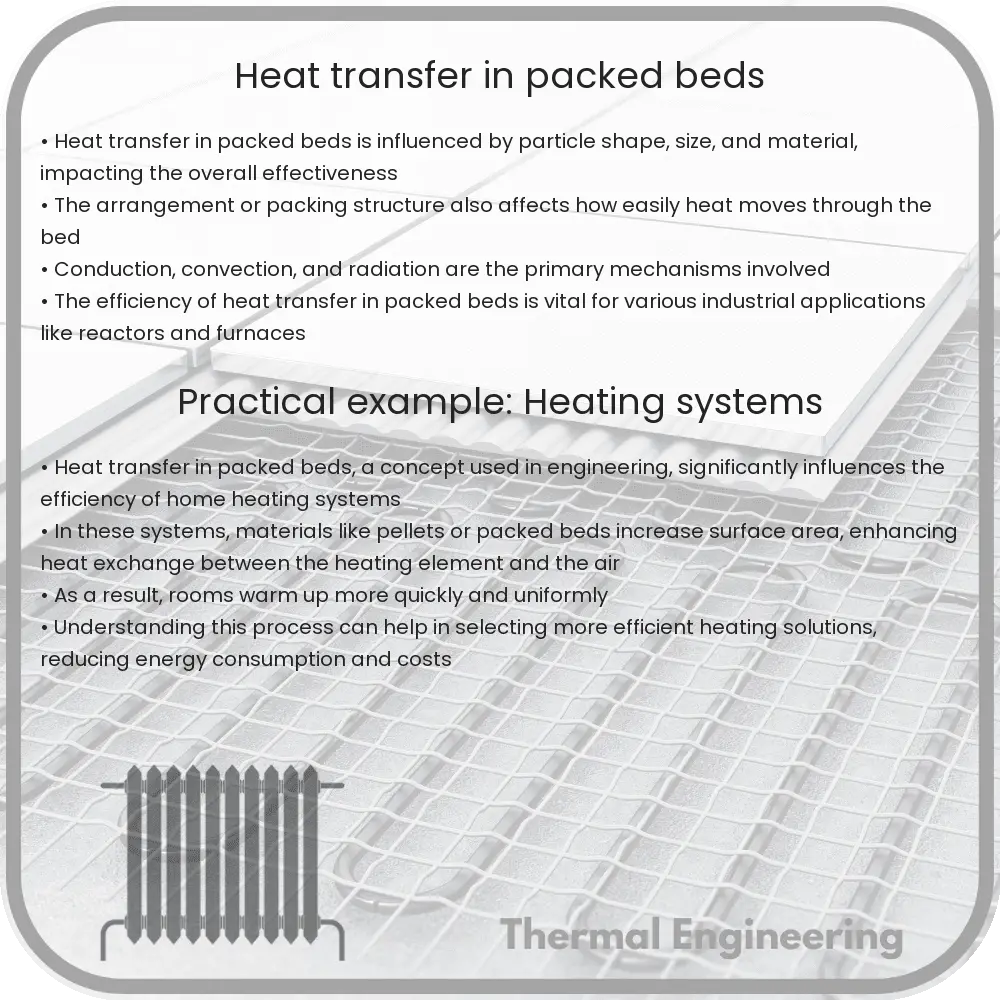Learn about the principles and applications of heat transfer in packed beds, a critical process in enhancing industrial efficiency and safety.

Understanding Heat Transfer in Packed Beds
Heat transfer in packed beds is a fundamental concept used in various engineering applications such as chemical reactors, petroleum refineries, and thermal storage systems. A packed bed consists of a container filled with solid particles or pellets, through which fluid (either liquid or gas) flows. The process of heat transfer in this setup is critical for optimizing the efficiency and safety of industrial processes.
Basics of Heat Transfer in Packed Beds
Heat transfer in packed beds occurs mainly through conduction, convection, and radiation, though in most cases, conduction and convection are predominant. The effectiveness of heat transfer depends on several factors:
- Particle size: Smaller particles have a higher surface area-to-volume ratio, which enhances heat transfer but can also increase pressure drop across the bed.
- Fluid velocity: Higher velocities improve heat transfer due to increased convection, but can lead to erosion of the particles if too high.
- Thermal conductivity: Higher conductivity of the particle material enhances heat transfer.
- Packing arrangement: Randomly packed beds usually promote better heat transfer compared to regularly structured packs due to increased turbulence.
Mathematical Model
To quantify heat transfer in packed beds, engineers use various models and correlations. One popular approach is by using the dimensionless numbers such as Reynolds (Re), Prandtl (Pr), and Nusselt (Nu) numbers. A common empirical correlation for heat transfer in packed beds is given by the following relationship:
Nu = 2 + 1.1 * Re0.6 * Pr0.33
This correlation considers that both fluid and particle properties affect the overall heat transfer efficiency. Here:
- Re (Reynolds number) indicates the ratio of inertial forces to viscous forces and is calculated as \( Re = \frac{D_p * u_f * \rho}{\mu} \), where \( D_p \) is the particle diameter, \( u_f \) is the fluid velocity, \( \rho \) is the fluid density, and \( \mu \) is the fluid viscosity.
- Pr (Prandtl number) is the ratio of momentum diffusivity to thermal diffusivity and is calculated as \( Pr = \frac{c_p * \mu}{k} \), where \( c_p \) is the specific heat at constant pressure, and \( k \) is the thermal conductivity of the fluid.
- Nu (Nusselt number) is the dimensionless temperature gradient at the surface and is a measure of convective heat transfer relative to conductive heat transfer across (normal to) a boundary.
Applications and Practical Considerations
The principles of heat transfer in packed beds are employed in numerous industrial applications. For instance, in chemical engineering, packed bed reactors utilize these principles to ensure optimal heating or cooling, which is crucial for controlling the reaction rates and yields. Similarly, in the field of renewable energy, packed beds are used in thermal storage systems where heat accumulated during the day can be stored and released during cooler temperatures.
In designing these systems, engineers must balance factors such as the pressure drop, structural integrity of the bed, maintenance ease, and cost-effectiveness. Monitoring and optimizing the flow characteristics and heat transfer properties are crucial for maximizing performance while ensuring operational stability and safety.
Understanding and applying the fundamentals of heat transfer in packed beds is essential for the design and operation of efficient industrial systems. By leveraging the correlations and principles outlined, engineers can predict and enhance system performance to meet specific operational needs.